How Laser Printer Machine Work? [Complete Guide 2025]
Laser printers have shaken up the printing industry. They are getting popular for a good reason. Because of rapid print speeds, high-quality output, convenience, and overall efficiency, have become important tools in homes, offices, and businesses.
From personal to industrial settings, this printer is everyone’s go-to choice. Surprisingly, these inkless printers can print documents with images, text, or graphics; the quality will be clear and crisp.
If you wonder how these gadgets work, Read on to break the indecision cycle. Far from being a magical spell, these printers involve a complicated process of lasers, toner cartridges, static, paper, mirror, and heat.
In this blog, I’ll walk you through how laser printer machines work, explore their benefits, and highlight specialized uses such as the laser printer machine for LED bulbs and wood laser printer machines.
Table of Contents
What is a Laser Printer Machine?
A laser printer machine is an electrostatic digital printer with endless advantages that uses laser technology to produce high-resolution images, text, and graphics on paper or other materials.
The process involves a laser beam that imprints an invisible stamp or image onto a photosensitive drum. This stamp is then transferred to the printing medium through a charge of static electricity and heat. It attracts the toner powder to print out images onto the substrate.
The printer works like magic but requires quite technical experience. A toner cartridge can print up to 50 pages per minute and go for 2,500 to 3,000 pages before needing replacement—far more than an inkjet printer.
If you see the price, laser printers are expensive but cost-effective in the long run. Toner cartridges cost more than ink cartridges but they can print more documents.
As a result, the return on investment from cost savings overcomes any initial costs.
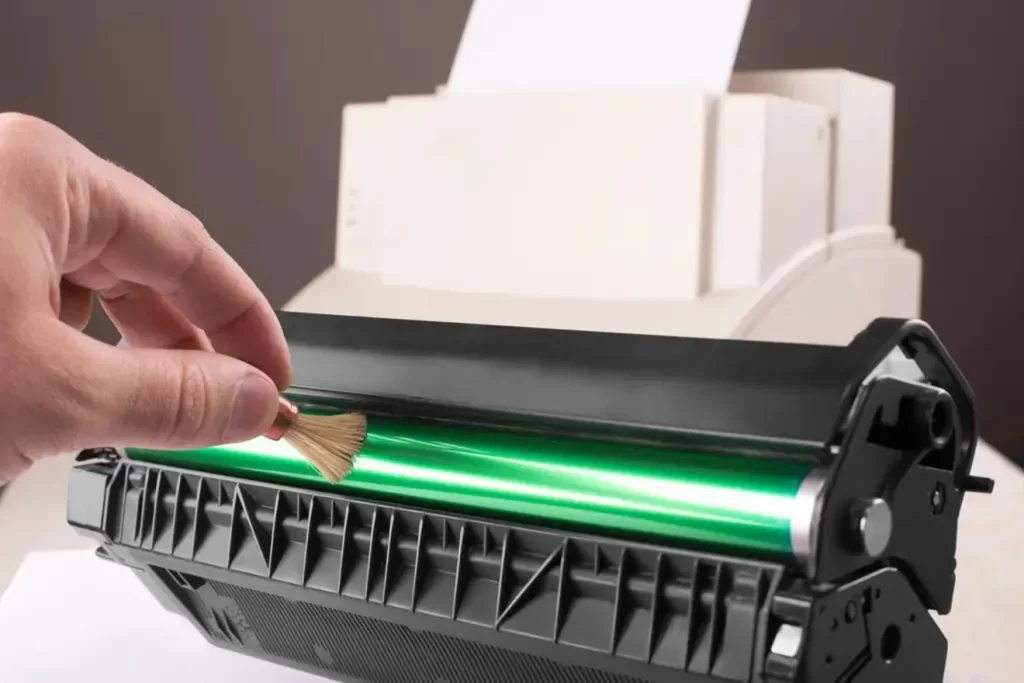
Key Components of Laser Printer
- Drum: It’s the heart of the printer; the drum is coated with a photosensitive material (a green color) that reacts to light. It is built into the toner cartridge and sometimes works as a standalone unit.
- Toner Cartridge: It contains the toner powder (colored or carbon/iron oxide powder) used to create the image on the paper. A toner cartridge is irreplaceable in a laser printer and available in four colors; Cyan, Magenta, Yellow, and Black (CMYK).
- Fuser Unit: A heating element that melts the toner onto the paper. This adheres the toner to the page, preventing it from smudging or falling off the paper when it leaves the printer.
- Transfer Belt: The transfer belt carries the paper through the printer and across the drum, allowing the toner to be transferred. Some smaller printers do not have a transfer belt but use rollers, having the same function.
- Transfer Corona Wire: It applies an electrical charge to the paper to attract the toner from the drum. It got heated up during the warm-up process.
- Laser Unit: It generates the laser beam to create the image on the drum. It’s like the transmission of light from the laser diode across the series of mirrors.
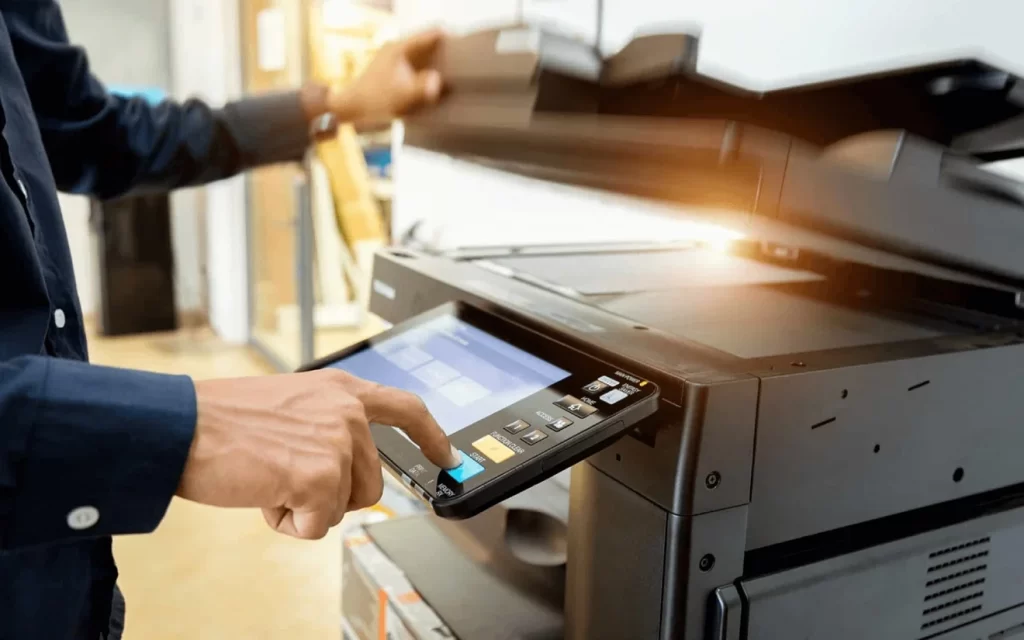
How Does a Laser Printer Work?
At its core, a laser printer operates on the principle of electrophotography. Instead of spraying like an inkjet printer, the laser process involves several key steps:
- Step 1: Image Creation- The computer sends digital data to the printer, which converts it into a raster image format.
- Step 2: Drum Charging- A cylindrical drum coated with a photosensitive material receives a static electric charge.
- Step 3: Laser Imaging- A laser beam scans the back and forth across the drum. It neutralizes the charge in areas corresponding to the image.
- Step 4: Toner Application- Toner particles, which are finely grounded powder, adhere to the charged areas of the drum.
- Step 5: Transfer- The toner image is transferred to the paper by applying heat and pressure.
- Step 6: Fusing- The toner is melted and bonded to the paper using heat and pressure.
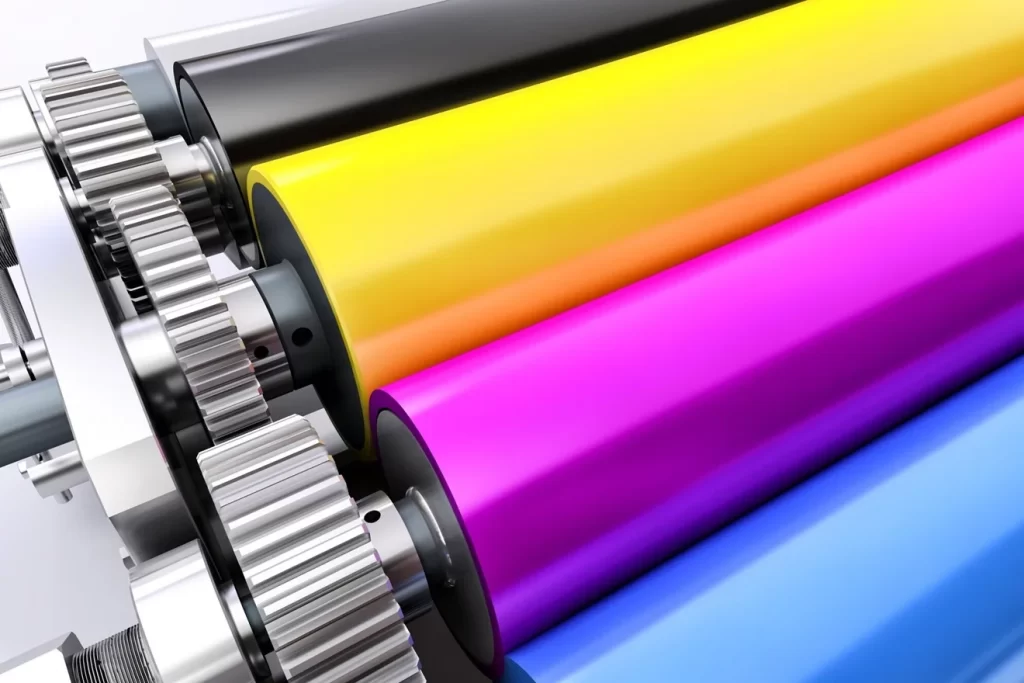
Benefits of Using Laser Printer Machine
Laser printers have earned their name as a workhorse in the printing industry. Here are some of the compelling reasons that make it an ideal choice for your home or office use:
Speed
Laser printers excel at handling large print jobs quickly. Thanks to its laser beam technology, waiting is no longer an issue. Laser printers can print 25 to 50 pages per minute, while high-end printers can go up to 100 pages per minute.
If you want to print large documents or presentations or to ensure your project is completed efficiently, this printer doesn’t disappoint you. It’s a game changer to keep your workflow smooth, and your working environment productive.
Excellent Print Quality
Laser printers turn consistent and sharp output, even for images and graphics. The print quality is as clear as crystal water.
There is no smudging, fading, or cracking of the final image, as no ink is used during the printing process. When toner bakes into the paper, the results will be flawless and professional every time.
Cost-Effectiveness
While the initial investment might be higher, the overall cost per page is often lower than inkjet printers, especially for high-volume printing. Toner cartridges last longer than inkjet printers because they are designed for powder.
Without any doubt, you can refill inkjet cartridges but they can’t go for a long time. If you’re printing just black and white documents then a laser printer machine saves you a substantial amount over time.
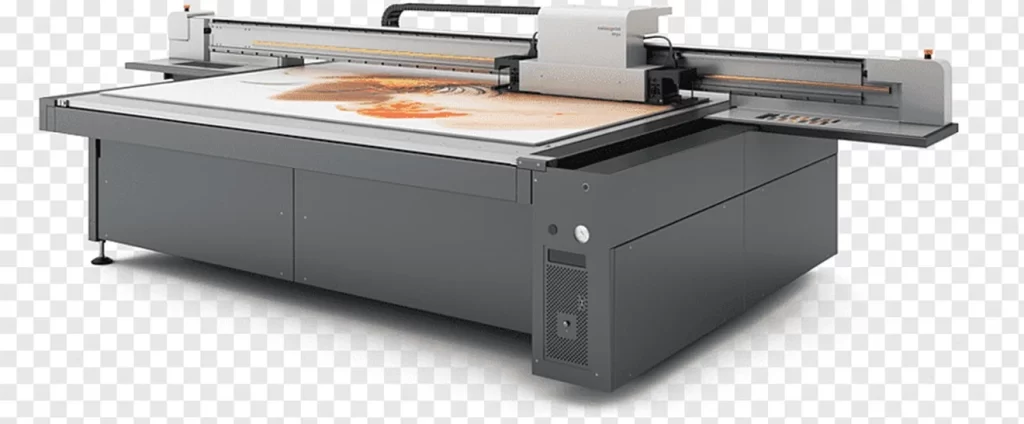
Laser Printer Machine for LED Bulb Marking
The laser printer machine for LED bulb marking is gaining popularity in the electronics industry. LED identification is feasible using a DataMatrix or a QR code (a Quique code).
A wealth of industrial applications can be performed on the LED surface. LED bulbs require precise and permanent markings for branding, regulatory compliance, and traceability purposes. All of these on the intricate curve of the LED body are quite difficult.
The laser printer makes it easy for you to mark on a variety of curves. Laser printers offer several advantages in this context:
- High Precision: The laser’s ability to focus on tiny areas ensures accurate and clear markings, even on small surfaces like LED bulbs.
- Non-Contact Process: Laser marking does not involve physical contact, reducing the risk of damage to the delicate surface of LED lamps.
- Durability: Laser markings are resistant to wear, heat, and fading, ensuring long-lasting results.
These machines are often integrated into production lines, allowing for rapid and consistent marking of LED bulbs and lamps. The markings can include logos, serial numbers, manufacturing dates, and more.
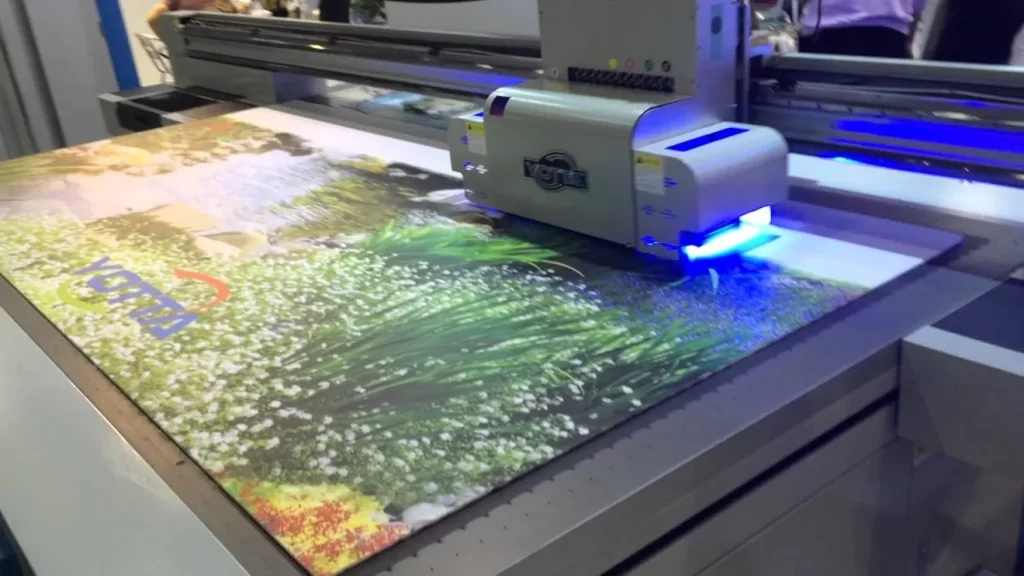
Wood Laser Printer machine: A creative Tool for Designers
Wood laser printer machine is an artistic companion of creative professionals, artisans, and manufacturers. These machines are designed to engrave or cut wood with exceptional precision to print intricate designs, personalized products, and functional items.
To engrave wood with a laser printer, a focused beam of light vaporizes the wood to produce a textured image. The engraving depth can be adjusted by changing the laser power to reflect the 3D effects.
Key Features and Benefits:
- Versatility: Wood laser printer machine is capable of handling various types of wood, including hardwood, softwood, plywood, and MDF.
- Precision Cutting: The printer can work through thicker and much more intricate designs with sharp, clean cuts best suited for woodworking, constructing furniture’s designs, home decorations, or specific wooden items.
- Engraving: It offers detailed engravings for the various gifts which are customized and decorative signs and arts. The depth and pressure of engraving can be adjusted, making it possible to create barely visible and deep cuts.
Appearance of Laser-Engraved Wood
As the laser burns the top layer of wood, the engraved area often appears darker and burnt. You can also get a better contrast pattern by increasing the laser power. Woods with a higher resin content naturally generate darker engraving colors.
Conclusion
Laser printers are essential equipment in various industries, providing efficiency, accuracy, high-quality prints, and versatility. That is why, if you need a laser printer machine for LED bulbs, to print documents, or to engrave wooden designs, there is a perfect laser printer for everyone.
Knowing the features of these machines and their application in the industry assists one in making the right choice and fully benefits from this gadget.
For many applications such as LED bulb marking or wood engraving, you can understand how to take the artwork to the next level, with enhanced results and durability.
